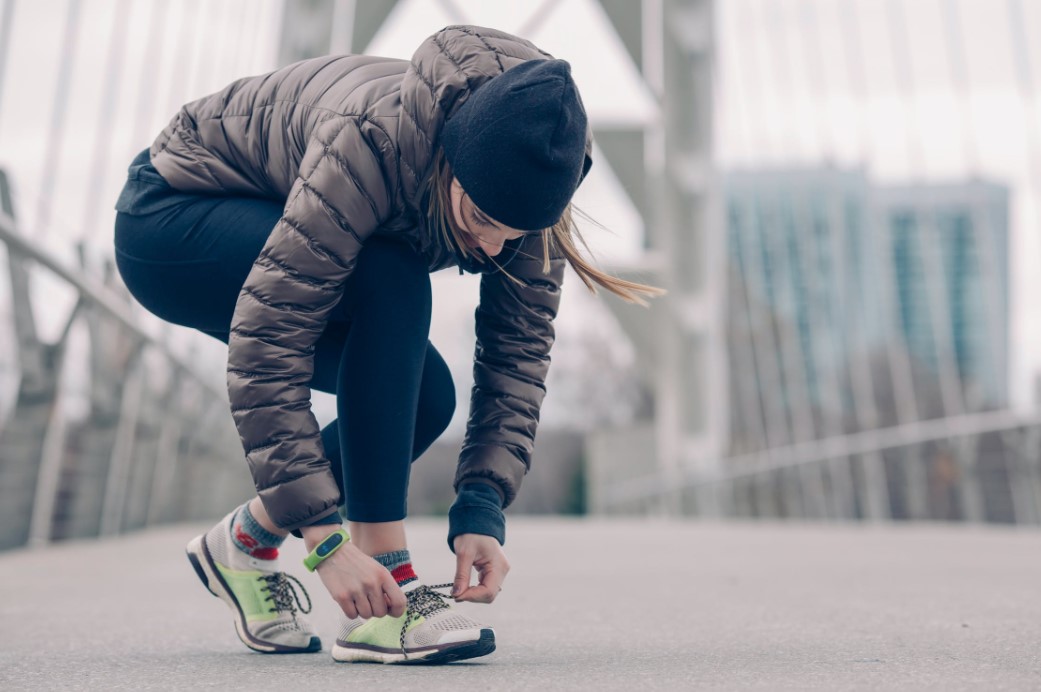
Warm up as it cools down to avoid an injury this Winter
Did you know that May, June and July are the busiest months for sport and exercise related injuries in Australia?[1] With COVID-19 restrictions currently keeping all team sports on the backburner, total injuries this year are likely to drop, but that doesn’t mean your chances of suffering a winter exercise injury have disappeared.
Can cold weather contribute to musculoskeletal pain and injuries?
You might find that as the weather gets colder, you feel like you experience more aches and pains, and even feel like your muscles are stiffer.
Over the years a number of studies have looked at the correlation between arthritis pain, temperature, weather and barometric pressure with none being totally conclusive.[2] That being said, some studies have shown a plausible link between barometric pressure and cold weather on some specific arthritic conditions or under less strict conditions.[3]
One certainty is though that cold muscles, tendons and ligaments are more likely to lead to muscle sprains and joint strains due to decreased flexibility and elasticity.[4]
Increase your warm-up time and quality
This is probably the single most important piece of advice if you are undertaking any physical activity during the winter months.[5] If you normally warm up for 5 minutes, extend it to 10 as it gets colder
A good warm-up:
- Prepares the body and mind for the activity
- Increases the body’s core temperature
- Increases the heart rate
- Increases breathing rate
- Stimulates flexibility and power
The cool down is just as important
Many musculoskeletal physiotherapists will agree that failing to cool down adequately is a major contributor to muscular and tendon injuries.
After physical exercise the body needs time to slow down and recover, so cool down immediately after your activity for at least 5 to10 minutes. Sports and exercise physiotherapists recommend your cool-down can be the same sort of exercise as the warm-up with low intensity body movement such as jogging or walking substituted for running.
Can stretching help to reduce injuries?
Stretching before and after physical activity helps to promote maximum flexibility, relax the muscles, return them to their resting length and promotes recovery by assisting in the body’s natural repair process.
When stretching it is important to:
- Stretch all muscle groups that will be or were involved in the activity
- Stretch gently and slowly
- Don’t bounce or try and stretch too quickly
- Only ever stretch to the point of mild discomfort
- Don’t hold your breath – breathe slow and easy
Don’t forget to stay hydrated
While it may not be scorching hot outside your body is still going to need a healthy dose of water daily. Dehydration is one of the major causes of muscle cramps and the winter months are an easy time to lost sight of drinking a couple of litres of water every day. Caffeine drinks also cause dehydration, so steer clear of excessive coffee and energy drinks too if you can.
Your muscles and ligaments function and perform better when they are warmer.
Starting a winter run or exercise cold reduces proprioception and subjects tight muscles and tendons to increased injury risk. Don’t end up with ice packs on musculoskeletal injuries during cold weather months.
For more information on warming up, injury prevention and correct technique, give a sports physio a call and book in for a one-on-one session.
[1] https://www.aihw.gov.au/reports/injury/hospital-care-for-australian-sports-injury-2012-13/contents/table-of-contents
[2] The influence of weather on the risk of pain exacerbation in patients with knee osteoarthritis – a case-crossover study. Ferreira, M.L. et al. Osteoarthritis and Cartilage , Volume 24 , Issue 12 , 2042 – 2047
[3] Deall C, Majeed H (2016) Effect of Cold Weather on the Symptoms of Arthritic Disease: A Review of the Literature. J Gen Pract (Los Angel) 4:275. doi: 10.4172/2329-9126.1000275
[4] Scott, E E F et al. “Increased risk of muscle tears below physiological temperature ranges.” Bone & joint research vol. 5,2 (2016): 61-5. doi:10.1302/2046-3758.52.2000484
[5] Woods K, Bishop P, Jones E. Warm-up and stretching in the prevention of muscular injury. Sports Med 2007;37:1089-1099.



